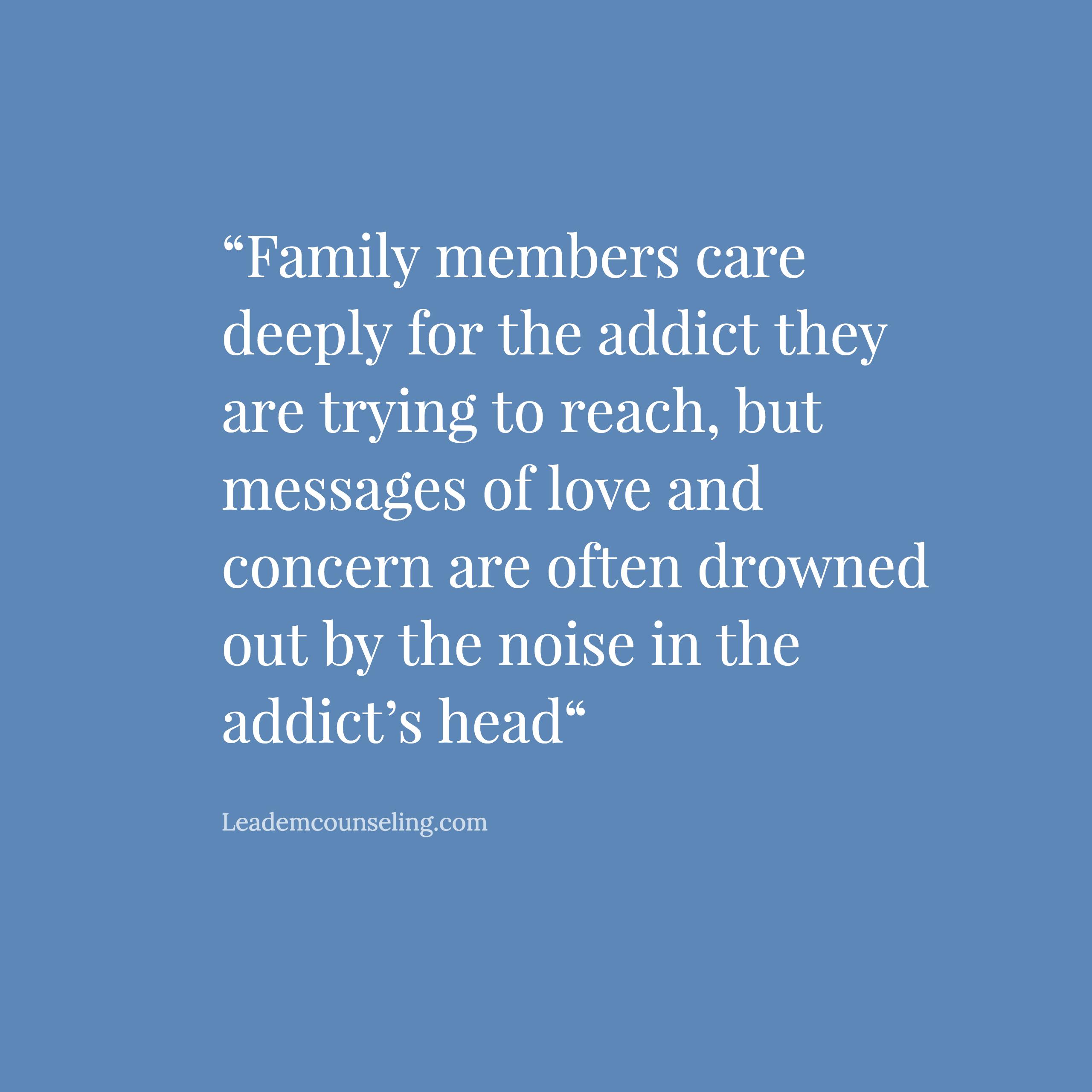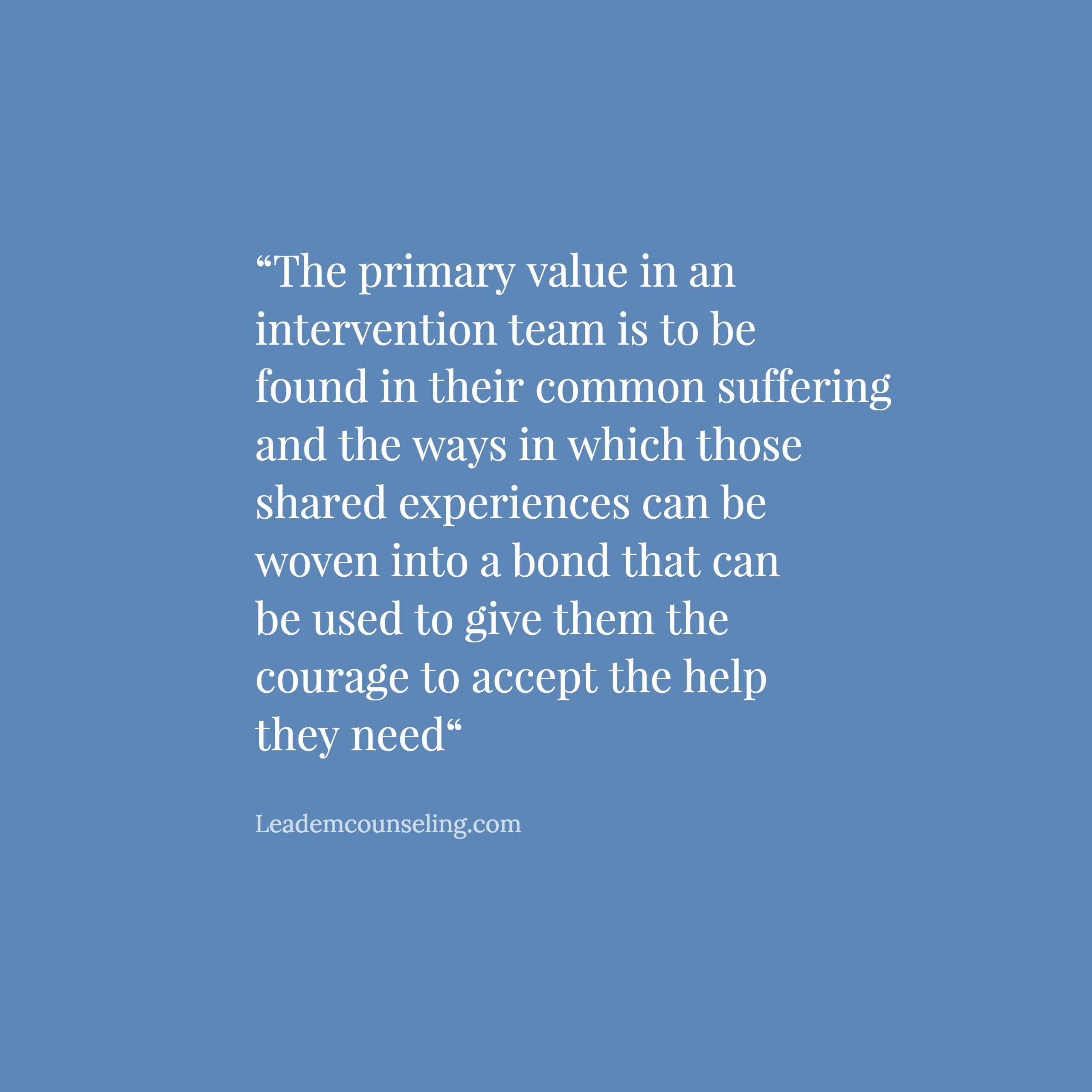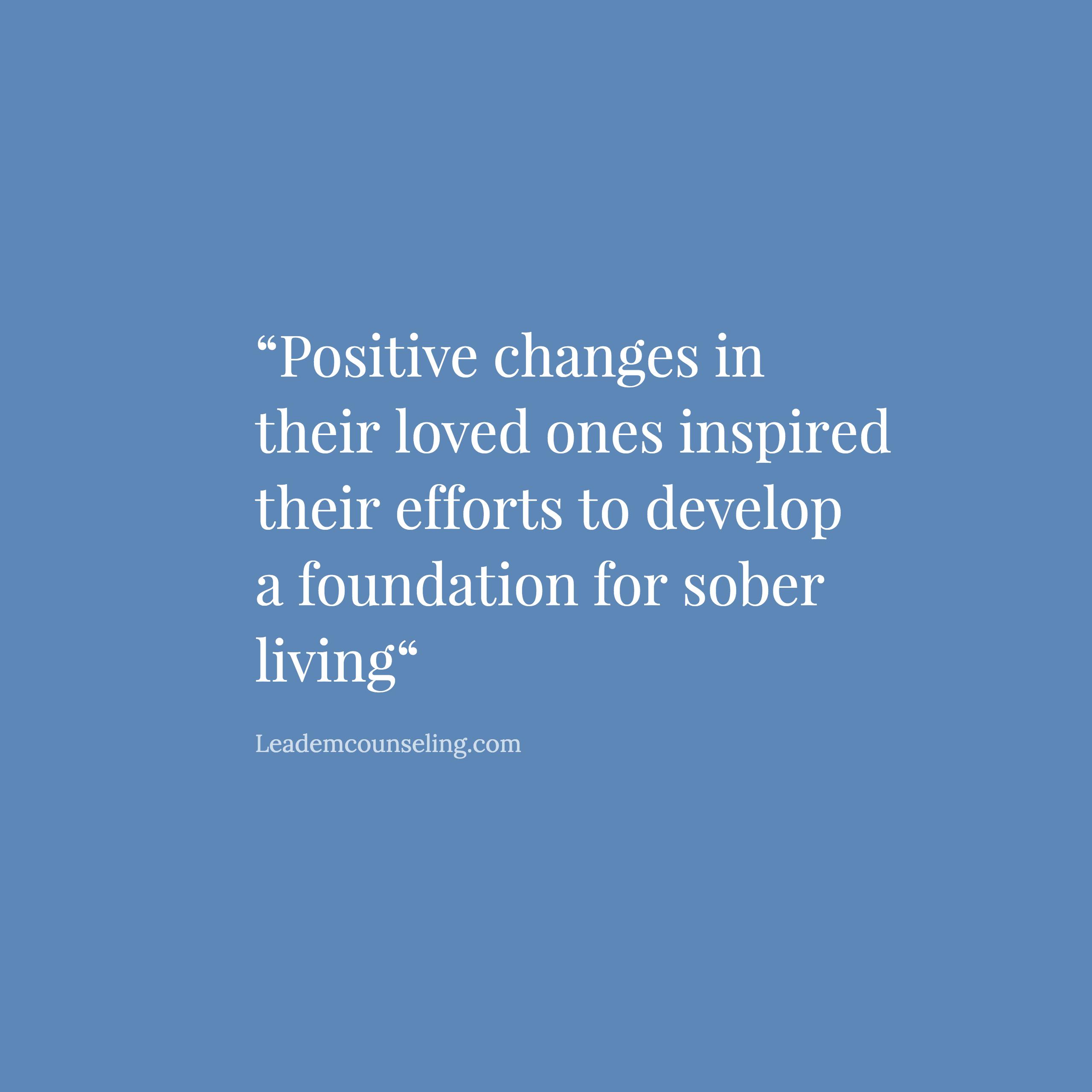How Can Family Help Intervene in Addiction?
The family or loved ones of an addict can help by participating in an intervention and get help for themselves.
 The addict can free-fall to a bottom of severe consequences if he or she is left alone to develop the awareness a person usually requires to identify the need for help. There are many neuropsychological reasons that an addict will be unable to see what is really going on or how his or her drug of choice is causing problems. Anyone who has love or worked with an addict will agree with the perception that addicts are generally functioning with impairment in the areas of reason, logic and judgement. The same people will unfortunately be hard pressed to answer the question they frequently ask: Why can’t he see what he is doing to himself? The answer is really quite complex but the simple explanation we offered in our last article is the most fundamental: because he can’t see what is happening to himself. Furthermore “he” cannot change what he can not see. That is where the family comes in.
The addict can free-fall to a bottom of severe consequences if he or she is left alone to develop the awareness a person usually requires to identify the need for help. There are many neuropsychological reasons that an addict will be unable to see what is really going on or how his or her drug of choice is causing problems. Anyone who has love or worked with an addict will agree with the perception that addicts are generally functioning with impairment in the areas of reason, logic and judgement. The same people will unfortunately be hard pressed to answer the question they frequently ask: Why can’t he see what he is doing to himself? The answer is really quite complex but the simple explanation we offered in our last article is the most fundamental: because he can’t see what is happening to himself. Furthermore “he” cannot change what he can not see. That is where the family comes in.
Family Intervention
 The authors have found that an addict’s relationship with an addictive substance or process is a very intimate one. Most sober addicts will tell you that they had developed a trusting relationship with his or her respective drug of choice. Under closer examination they will explain that in-spite of the consequences that began to mount they continued to see the drug of choice as having benefit however fleeting or ultimately destructive. Most of them will be able to identify times in the progression of addiction where loved ones attempted unsuccessfully to separate them from the addictive substance or addictive process without success because the messages were delivered in angry and shaming presentations.
The authors have found that an addict’s relationship with an addictive substance or process is a very intimate one. Most sober addicts will tell you that they had developed a trusting relationship with his or her respective drug of choice. Under closer examination they will explain that in-spite of the consequences that began to mount they continued to see the drug of choice as having benefit however fleeting or ultimately destructive. Most of them will be able to identify times in the progression of addiction where loved ones attempted unsuccessfully to separate them from the addictive substance or addictive process without success because the messages were delivered in angry and shaming presentations.
We understand, perhaps better than most because of work with many family intervention teams, that family members deliver many harsh and damaging emotional interventions that fail because of two reasons. First, they have waited so long to take action that fear and anger lead the presentation of their concern for the addict’s behavior and secondly because they tend to focus almost exclusively on what was wrong with the addict. Most family members care deeply for the addict they are trying to reach, but messages of love and concern are often drowned out by the noise in the addict’s head. We have come to call that noise the Voice of Denial. Let us take you for a moment to the recording studio playing out the tunes in the mind of an active addict by sharing an excerpt from our relapse prevention work, An Ounce of Prevention: A Course in Relapse Prevention.
The Voice of Denial
You think I am the problem. I am the solution! Yeah, I know that you don’t think so, but I am the only thing that gives this guy any peace of mind at all. Well, perhaps it is easy for you to judge so freely from your high horse when you call him weak-willed and treat him with indifference or disgust. This guy has problems that you cannot even imagine dealing with. He has lost control over his ability to behave the way that he wants to. Everything he touches bursts into flames. He keeps hurting those he loves and usually disappoints those who once counted on him. He used to give defiant speeches about his ability to set things straight on his own but he does not even bother to put up much of a fuss any more. He is content with the verbal assaults — in fact he has come to count on them to help him swallow the next drink because it hurts to continue drinking without external threats to his thin threads of dignity. I am his only friend left. He used to be able to make things right with another drink or a pledge to never drink again and now he has neither. He has lost the will to make any more solemn promises. Booze does not make the pain go away. He only has me to ease the pain. Before you decide to break me you had better have a pretty good sedative available or something real to pin his hope on. I personally hope that you keep wagging your disapproving finger at him. It makes me look pretty good.
In order for family members and other members of the intervention team to have their voices heard over that of Denial they will need to do more than prepare a list of concerns and present those concerns to the addict along with threats of consequences for his or her failure to accept help. The intervention team is invaluable but only if they are prepared to do the work that they are asking of the addict.
The Importance of the Intervention Team
 The intervention team, as depicted on marginally therapeutic entertainment shows such as Intervention, an American documentary television series that premiered on March 6, 2005 on A&E[1] and critically less-than-therapeutic sensationalized talk shows such as Dr. Phil who has been criticized for his “self-serving “[2] performance and disregard for the challenges his would-be interventions cause his targets and their families, is vital to the intervention process. However, models that use the team as leverage to break through the denial of the addict for the sole purpose of getting the addict to accept help do not necessarily value the team. If an intervention model works from a model that defines success as getting the addict to accept treatment, we believe that they are undervaluing the team and perhaps ignoring the needs of its members. We believe that a successful intervention gets help for everyone involved in the intervention process that needs help — and not just the addict.
The intervention team, as depicted on marginally therapeutic entertainment shows such as Intervention, an American documentary television series that premiered on March 6, 2005 on A&E[1] and critically less-than-therapeutic sensationalized talk shows such as Dr. Phil who has been criticized for his “self-serving “[2] performance and disregard for the challenges his would-be interventions cause his targets and their families, is vital to the intervention process. However, models that use the team as leverage to break through the denial of the addict for the sole purpose of getting the addict to accept help do not necessarily value the team. If an intervention model works from a model that defines success as getting the addict to accept treatment, we believe that they are undervaluing the team and perhaps ignoring the needs of its members. We believe that a successful intervention gets help for everyone involved in the intervention process that needs help — and not just the addict.
Trauma to the Families
 The families, and other concerned members of the teams that we have worked with over the past 45 years have been very clear with us about traumatic injuries one endures in the throes of an addiction. We have heard dark stories of betrayal resulting from physical, emotional and sexual abuse as well as harrowing accounts of deep depression, economic destitution and social disgrace and other profound examples of demoralizing imprisonment in a house of broken mirrors from which there seemed no escape. Many of the stories reflect an abyss whose bottom is imperceptible and would leave the average person wondering why the addict is permitted to suffer for so long. When we share those same stories with the interventionist we train in our program for Certifying Raising the Bottoms Interventionists they are received with genuine concern and deep compassion for the suffering addict. The stories seem to motivate them to greater levels of genuine empathy and hunger for skills that will enable them to help the addicts that are staggering toward the edge of the cliff to get the help they need. Most are equally alarmed to find out that the stories we have shared are chapters from the lives endured by the team members and not the addict. It is at that point where our students come to understand why we believe the intervention team members should be the first and major focus of the intervention process. Their pain is real and their willingness to share and address the needs associated with that pain is of enormous value.
The families, and other concerned members of the teams that we have worked with over the past 45 years have been very clear with us about traumatic injuries one endures in the throes of an addiction. We have heard dark stories of betrayal resulting from physical, emotional and sexual abuse as well as harrowing accounts of deep depression, economic destitution and social disgrace and other profound examples of demoralizing imprisonment in a house of broken mirrors from which there seemed no escape. Many of the stories reflect an abyss whose bottom is imperceptible and would leave the average person wondering why the addict is permitted to suffer for so long. When we share those same stories with the interventionist we train in our program for Certifying Raising the Bottoms Interventionists they are received with genuine concern and deep compassion for the suffering addict. The stories seem to motivate them to greater levels of genuine empathy and hunger for skills that will enable them to help the addicts that are staggering toward the edge of the cliff to get the help they need. Most are equally alarmed to find out that the stories we have shared are chapters from the lives endured by the team members and not the addict. It is at that point where our students come to understand why we believe the intervention team members should be the first and major focus of the intervention process. Their pain is real and their willingness to share and address the needs associated with that pain is of enormous value.
While we do agree with those who hold that the members of the team serve as a invaluable resource to the process of getting the addict to see what he or she is unable to see, we do not agree that their presentations of concern is what makes them of value. Most thesaurus notations for the term value use nouns such as relative worth, merit and importance. We believe that their value to the addict should be considered as secondary to what the intervention process has to offer the members. The primary value in an intervention team is to be found in their common suffering and the ways in which those shared experiences can be woven into a bond that can be used to give them the courage to accept the help they need.
Bob Stuckey’s Challenge
 A group of clinicians (including one of the authors) were once given a challenge by Dr. Bob Stuckey, a psychiatrist in recovery and a leader in addiction treatment during the early seventies. They had two weeks to develop a unique, dynamic alcoholism treatment program that would surely generate better results than any other available. The program could have any duration, level of participation and modality deemed necessary. However, it could cost no more than $1,000. No matter how enthusiastically the clinicians threw themselves into the challenge, none were able to figure out the solution Stuckey had in mind: Ignore the alcoholic and treat the family system. If you do that, then the alcoholic will have no choice but to seek real help.
A group of clinicians (including one of the authors) were once given a challenge by Dr. Bob Stuckey, a psychiatrist in recovery and a leader in addiction treatment during the early seventies. They had two weeks to develop a unique, dynamic alcoholism treatment program that would surely generate better results than any other available. The program could have any duration, level of participation and modality deemed necessary. However, it could cost no more than $1,000. No matter how enthusiastically the clinicians threw themselves into the challenge, none were able to figure out the solution Stuckey had in mind: Ignore the alcoholic and treat the family system. If you do that, then the alcoholic will have no choice but to seek real help.
Of course, an addicted person should never actually be ignored. But among other things, Stuckey’s challenge held up a mirror to intervention and its relationship to treatment. Most of the clinicians in the group happened to be in recovery and when their personal sources of unhealthy support dried when their family members were able to get help for themselves. The addicts in the training room were able to see that it was at that point that they were forced to dry up, too. Furthermore, positive changes in their loved ones inspired their efforts to develop a foundation for sober living. They had forgotten what brought about their own bottom or inspired them to get sober. Instead, they set to develop models for treating addiction that addressed family dynamics as an afterthought. Every treatment model they created left it up to the addict to come to his senses and get himself engaged in treatment.
Furthermore, we believe that addicts who are intervened on by team members who get help for themselves first and learn to value themselves first will return home from treatment to an environment which will almost intrinsically support long lasting change and enriched qualities of sober living.
So, if you want to get an addict help, focus most of your energy on the members of the team. We have been doing that for over 500 interventions. If you want more information about our model or would like to learn more about our certification program, please contact us at www.leademcounseling.com or call us at 732-797-1444. In the articles to come we will talk in greater depth about the tools we use to focus the healing energy of the common bond on the intervention team.
See our book: An Ounce of Prevention: A Course in Relapse Prevention
Related Article(s): What is Intervention? Practical Uses for Intervention Strategies
How to Avoid Relapse and How to Put a Relapse Prevention Technique Into Action
What is Relapse? What is Relapse Prevention?
About the Authors
 Elaine and John Leadem are the co-founders of Leadem Counseling & Consulting Services, P.C. (LCCS) and share a combined tenure in the addiction treatment field of over 69 years. They have authored and published a variety of titles designed to aid recovering addicts and their treatment providers in developing a comprehensive set of therapeutic resources from meditation guides for recovering couples to course material for developing individualized relapse prevention plans.
Elaine and John Leadem are the co-founders of Leadem Counseling & Consulting Services, P.C. (LCCS) and share a combined tenure in the addiction treatment field of over 69 years. They have authored and published a variety of titles designed to aid recovering addicts and their treatment providers in developing a comprehensive set of therapeutic resources from meditation guides for recovering couples to course material for developing individualized relapse prevention plans.
John’s personal mentorship by Vernon E. Johnson, Ph.D., the author of I’ll Quit Tomorrow and the pioneer of addiction intervention, led to the development their unique three-phase intervention model after 40 years of providing direct addiction intervention services. The model has been used in over 500 interventions and is easily adapted to a variety of substance addictions and other clinical problems. It is especially suited to work with process addictions, such as sex addiction, because it is designed to help the sex addict rise above the shame and accept help because each of the IT members are pointing the finger at themselves first.
© Copyright, John Leadem & Elaine Leadem, 2017
You are free to copy this article for future reference, to post it on other web sites and to share it with family or friends. If you would like to have permission to include it in a publication of your own you can request written permission by contacting the authors at www.leademcounseling.com.
[1] You can find more information about the A&E show Intervention at: http://www.aetv.com/shows/intervention/about
[2] You can read this article at: https://www.today.com/popculture/spears-parents-say-dr-phil-violated-their-trust-wbna22570295
[apss-share networks="facebook, twitter, google-plus, pinterest, linkedin" counter="0" total_counter="0" http_count="1"]







No Comments Yet | Post Comment
You can be the first to comment!
Leave a comment